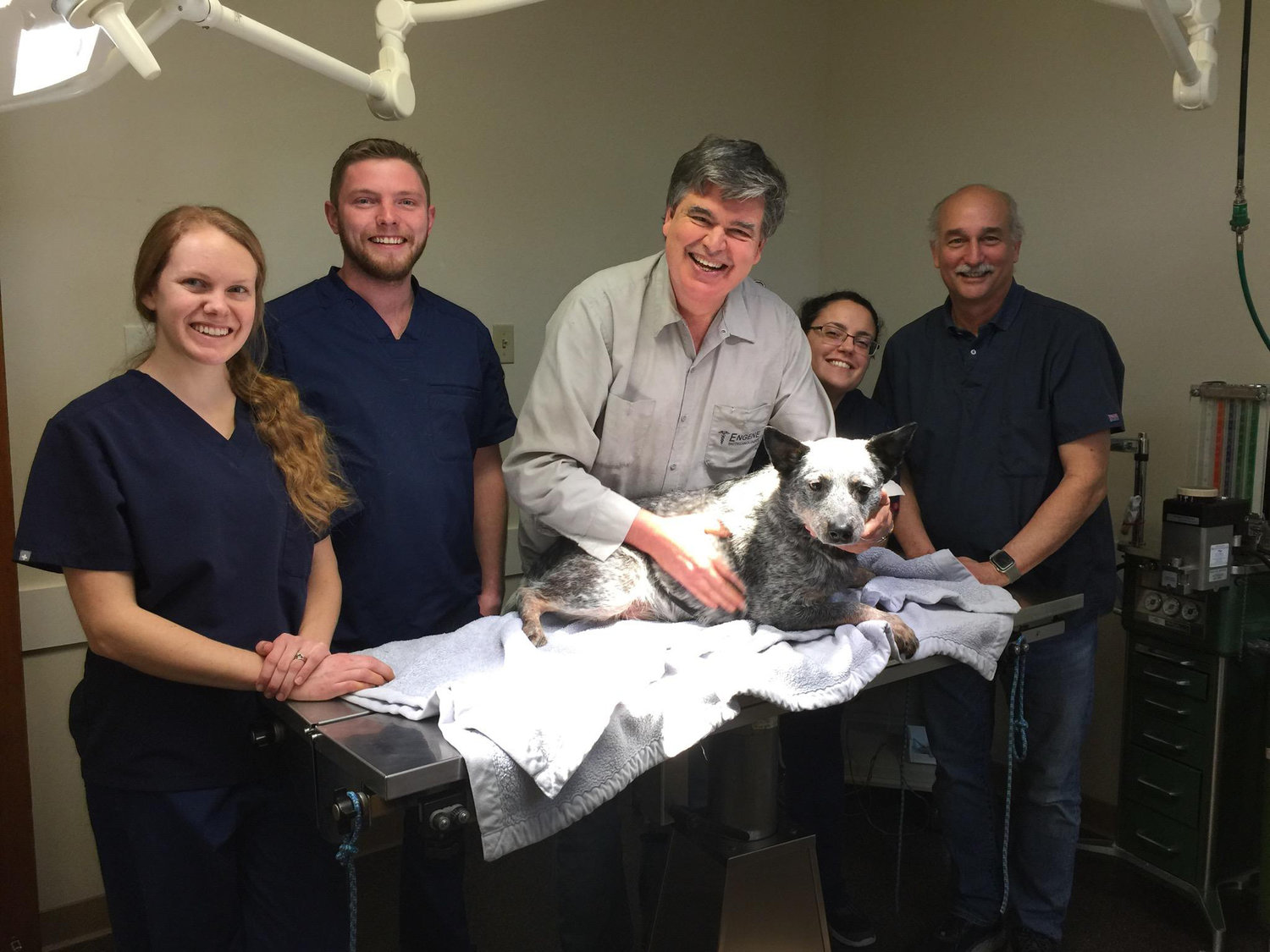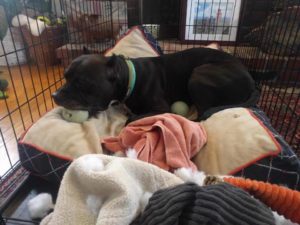If you’re a regular reader, you know I’m a big advocate of crate training. Whether your furry family member is a pup or a senior, providing her with her own cozy, private space has a number of benefits for both of you. For example, a crate can help not only with housetraining, but also car or plane travel, and overnight stays with friends, family, or at a pet-friendly hotel.
A health benefit of crate training is that dogs accustomed to spending time alone in their “bedrooms” are much less likely to develop separation anxiety or other phobias. Putting a puppy in her crate for a nap or some quiet time also helps her learn not to expect constant human attention, similar to the use of playpens for babies.
This strategy coupled with basic positive reinforcement obedience training will set the stage for a secure, balanced adult dog who is pleasant to be around, which is always the goal. To create crate-love in your dog, her space should be safe, comfortable, and relaxing, and she should associate it with only positive experiences.
How to Select the Right Crate
When you purchase a crate for your dog, the size is important. You want a space that’s not too big or too small. Your dog should be able to stand up, lie down, and turn around comfortably in it, but it shouldn’t be so large that he can easily use one end as his potty spot and the other end for sleeping and snacking. If you need to housetrain your dog, a crate large enough to have a bathroom at one end can actually slow down the process.
If you’re unsure what size crate to buy, talk to a shelter volunteer, your veterinarian or your breeder about what you want to accomplish so they can help you pick the right size. If you’re crate training a puppy, especially a giant breed, you’ll probably want a smaller crate initially and then a bigger one as he grows.
When you bring the new crate home, place it in an area where your family spends a lot of time — not in an isolated spot, or outdoors, or a high traffic location (which can be stressful), or where your dog will experience temperature extremes.
Make sure there’s nothing hanging inside the crate that could cause your dog harm, and especially while he’s still young and rambunctious, take his collar off before you put him in the crate so it can’t get hung up on anything. As necessary, disinfect the crate with either mild soap or vinegar and baking soda and rinse it thoroughly.
Transforming the Crate into a Delightful Doggy Den
Your canine companion will need something comfy to lie on in her crate, so bedding is a must. Depending on your dog (some destroy their beds, others don’t), you can choose a plush bed, a crate mat, or something in between. (If your dog is a persistent bed shredder, she probably needs more frequent or vigorous exercise and/or additional mental stimulation.)
You’ll also want to keep a fresh supply of clean filtered water in the crate. To keep the mess to a minimum, you can use a stainless-steel bowl that attaches to a side or the front of the crate. If you’ll be confining her to her crate for short periods, it’s a great idea to have food-stuffed or treat-release toys on hand to keep her occupied while she’s home alone.
Keeping the environment inside your dog’s crate comfortable is also very important. Depending on where you live, where in your home the crate is located, and your dog’s tendency to overheat, you might want to consider a crate fan (attached to the outside of the crate), or a small floor fan placed near the crate. The fan should provide good ventilation and keep your dog cool, without blowing directly on her — or she should be able to move away from it if she feels the need.
It’s also important not to place your dog’s crate in direct sunlight, too close to a heat source, or in a cold, drafty area of your home.
Something else you might want to try is covering the crate at night or to provide your dog with quiet time when she needs it. What I do with my dogs is drape a blanket over the back half of their crates to create a quiet, dark, den-like environment. My dogs use their crates as bedrooms — they go into them to sleep. If you decide to cover the entire crate, keep in mind it will cause the temperature inside to heat up, so you should make adjustments as necessary.
Getting Your Dog Used to His Crate
If you purchased a crate ahead of time and it’s there when your dog comes home, as long as he hasn’t had a bad experience with confinement in the past, it’s should be pretty easy to get him acclimated to his little den.
The first rule of crate training is to never, ever force your dog into or out of his crate, because you can end up with an unmanageable case of separation anxiety or a pathological aversion to enclosed or small spaces. The crate must represent a safe zone for your dog, so you never want to make his safe zone feel unsafe.
The second rule of crate training is what I call, “It’s all good,” which means everything about the crate is positive from your dog’s perspective. While you’re getting him used to his crate, everything he loves goes in there, and the door stays propped or tied open so he can freely investigate.
Put treats in and around the crate, along with treat release toys, chew toys, food puzzle toys — all his favorites. I also recommend feeding him in his crate with the door open. The goal is to have your dog voluntarily go into his crate because everything about it is positive and fun.
How to Handle a Case of Crate-Hate
If your dog is nervous or fearful due to a past bad crating experience, you’ll have to take things slower. A dog who has been crated as a form of punishment or locked in a crate for inappropriately long periods of time will need to be gently and patiently reintroduced to the crate.
Make sure to leave the door open (tie it open if necessary so there’s no chance it will close while he’s in there). Put food rewards around the outside of the crate and inside as well so he can get comfortable going in and out without worrying about being “trapped” inside.
Once you sense he’s comfortable inside the crate, feed him in there with the door open. Once he’s comfortably eating in the crate, close the door. Don’t go far and keep an eye on him. At some point he’ll realize the door is closed and he’s inside. Try to ignore any whimpering or barking. Once he’s calm, open the door and praise him.
When you start closing the crate door, leave it closed for very short periods of time (no more than a minute) so that he realizes he’s not “trapped” or being punished. In the meantime, continue tossing treats into the crate several times a day to reinforce the association between it and good things.
Once your dog begins associating good things with the crate and he’s feeling more comfortable in there, you can close the door for longer periods. Be sure to leave something fun inside such as a treat-release toy he can focus on. Don’t leave your house until your dog is completely comfortable in the closed crate while you’re at home. You can gradually extend the amount of time you leave him in the crate, providing he’s getting consistent, frequent trips outside to potty.
Once he’s comfortable being in a closed crate when you’re at home, you can begin taking short trips away from the house. If you need to leave your dog for longer than 4 hours, I recommend you use a dog sitter or a doggy daycare facility rather than crating him for long periods of time.
If you’re struggling with crate training, I recommend talking with positive dog trainer who can help you work through the problems you’re experiencing.













